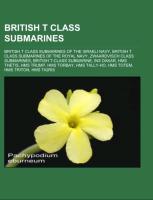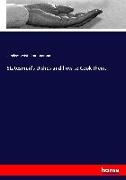- Start
- British T class submarines
British T class submarines
Angebote / Angebote:
Source: Wikipedia. Pages: 30. Chapters: British T class submarines of the Israeli Navy, British T class submarines of the Royal Navy, Zwaardvisch class submarines, British T-class submarine, INS Dakar, HMS Thetis, HMS Trump, HMS Torbay, HMS Tally-Ho, HMS Totem, HMS Triton, HMS Tigris, HMS Turbulent, HMS Truculent, HMS Thrasher, HMS Trident, HMS Tapir, HMS Tiptoe, HMS Taurus, HMS Triad, HMS Truant, HMS Tabard, HMS Terrapin, HMS Triumph, HNLMS Zwaardvisch, HMS Tuna, HMS Tetrarch, HMS Tradewind, HMS Trenchant, HMS Tempest, HMS Trooper, HMS Taku, HMS P311, HMS Talisman, HNLMS Tijgerhaai, HMS Talent, HMS Tantalus, HMS Thorn, HMS Traveller, HMS Truncheon, HMS Taciturn, HMS Thistle, HMS Trespasser, HMS Thule, HMS Tarpon, HMS Turpin, HMS Tribune, HMS Tantivy, HMS Tactician, HMS Templar, HMS Thorough, HMS Telemachus, HMS Tireless, HMS Tudor, HMS Teredo, HMS Trusty, HMS Thermopylae, HMS Token, HMS Tiara. Excerpt: The Royal Navy's T class (or Triton class) of diesel-electric submarines was designed in the 1930s to replace the O, P and R classes. Fifty-three members of the class were built just before and during the Second World War, where they played a major role in the Royal Navy's submarine operations. Four boats in service for the Royal Netherlands Navy were known as the Zwaardfisch class. In the decade following the war, the oldest surviving boats were scrapped and the remainder converted to anti-submarine vessels to counter the perceived growing Soviet submarine threat. The Royal Navy disposed of its last operational boat in 1969, although it retained one permanently moored as a static training submarine until 1974. The last surviving boat, serving in the Israel Sea Corps, was scrapped in 1977. Design began in 1934 but was constrained by the 1930 London Naval Treaty restricting the total British submarine fleet to 52, 700 tons, a maximum of 2, 000 tons for any boat, and maximum armament of one 5.1 inch (130 mm) gun. The "Repeat P"s, as the design was originally called, were intended to be large and powerful enough to operate against Japan in the absence of other British naval units. Britain was in a financial crisis and would have difficulty affording enough boats to meet their allowance. It was expected from British work on ASDIC that the other nations would develop something similar. To that end a smaller vessel around 1, 100 tons would avoid detection. In the face of expected enemy anti-submarine measures any attack would probably have to be made at long range without the aid of the periscope but on ASDIC. To counter the resultant inaccuracy a large salvo of at least eight torpedoes would be needed. The eventual design had 10 forward-facing torpedo tubes and a maximum diving depth of 300 ft (91 m). The design was finalised in 1935 and on June 24 the decision was made to drop the "Repeat P" designation and give all boats names starting with "T". The forward firing armamen
Folgt in ca. 5 Arbeitstagen

